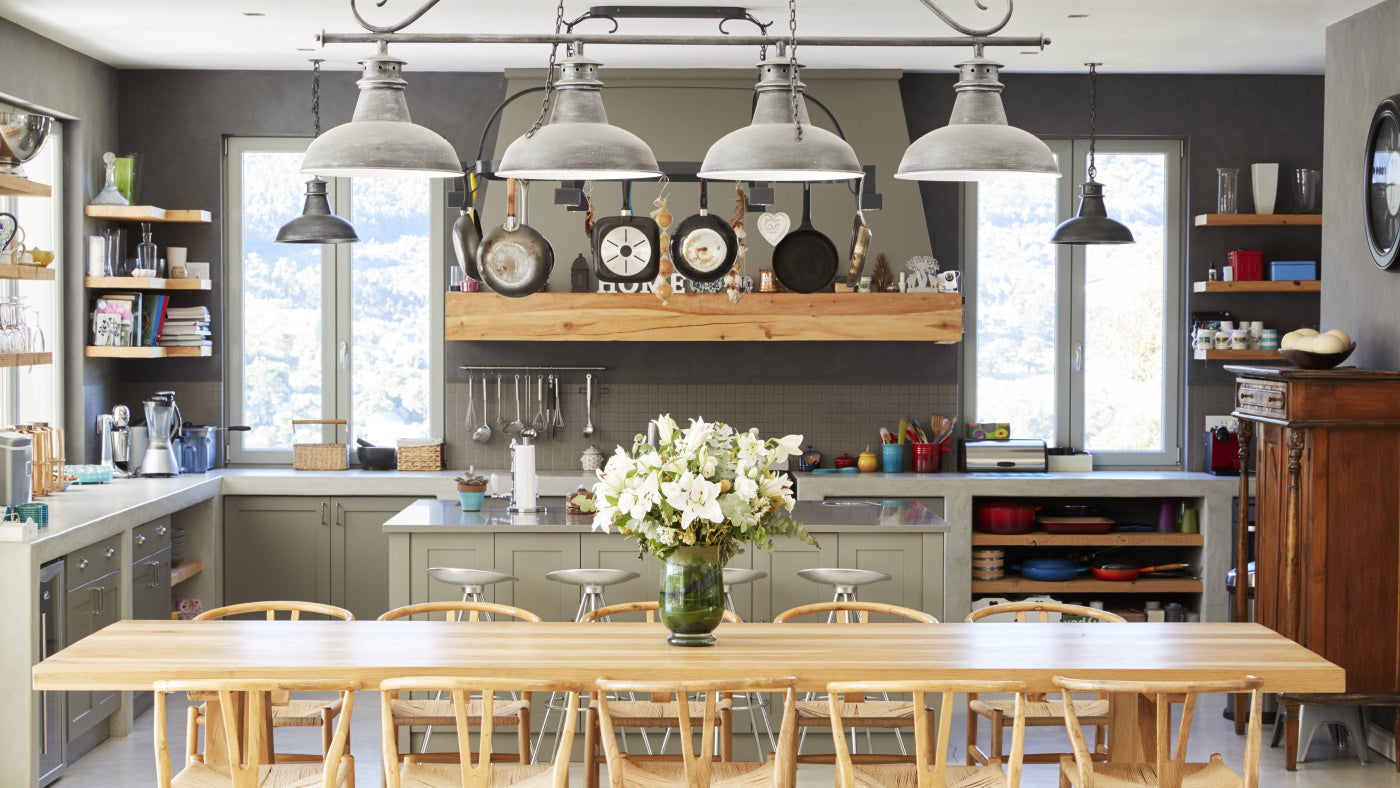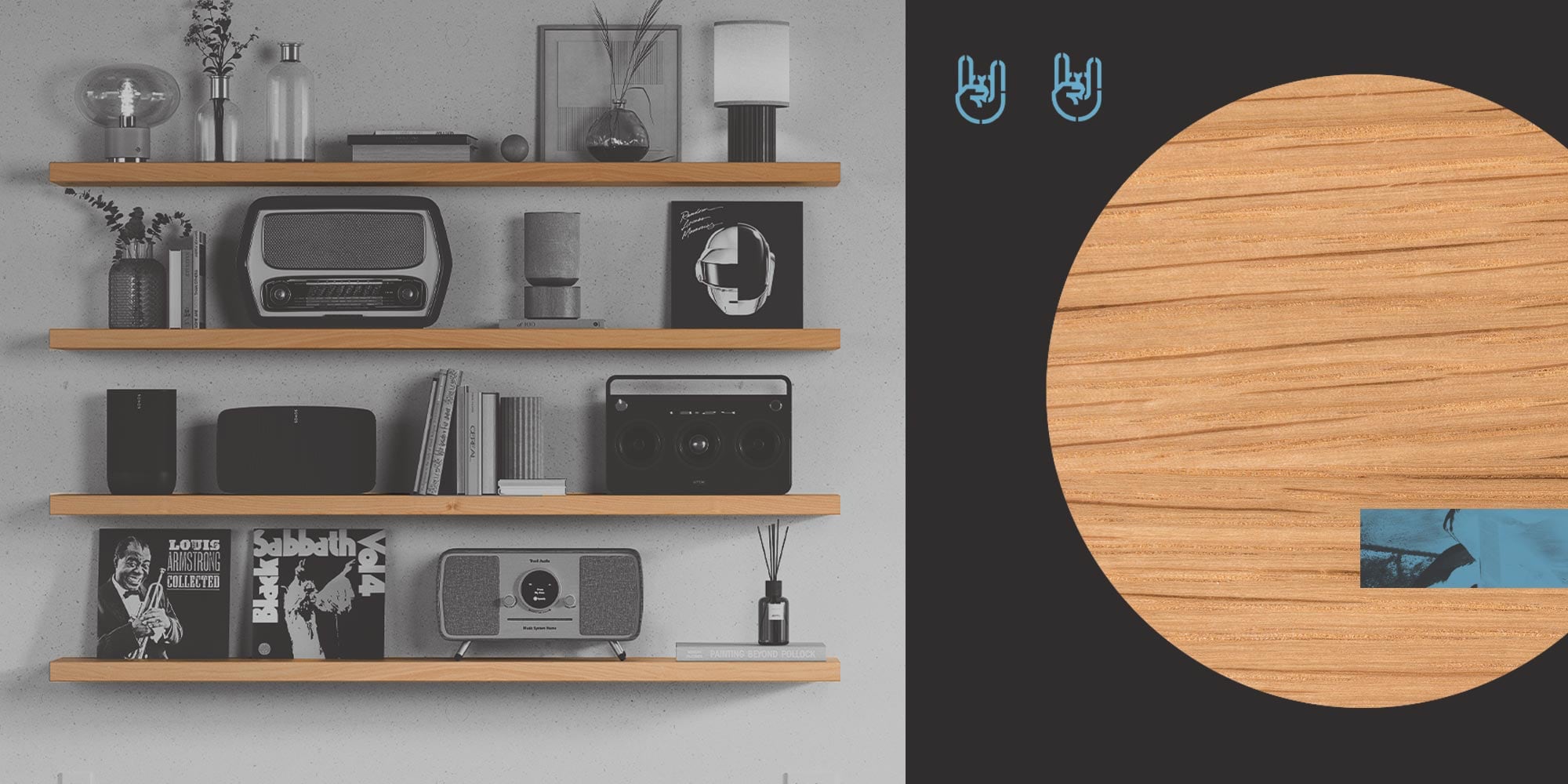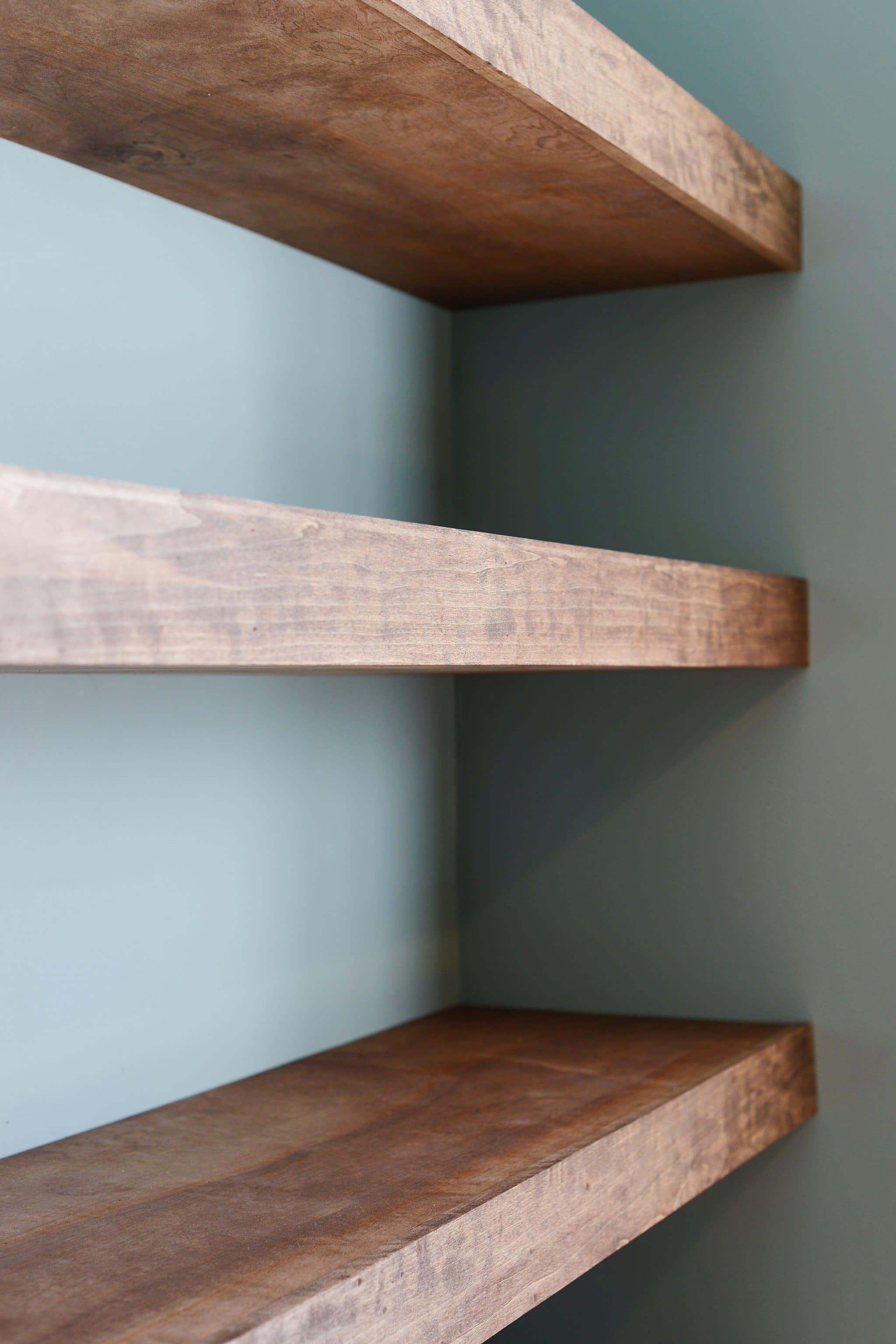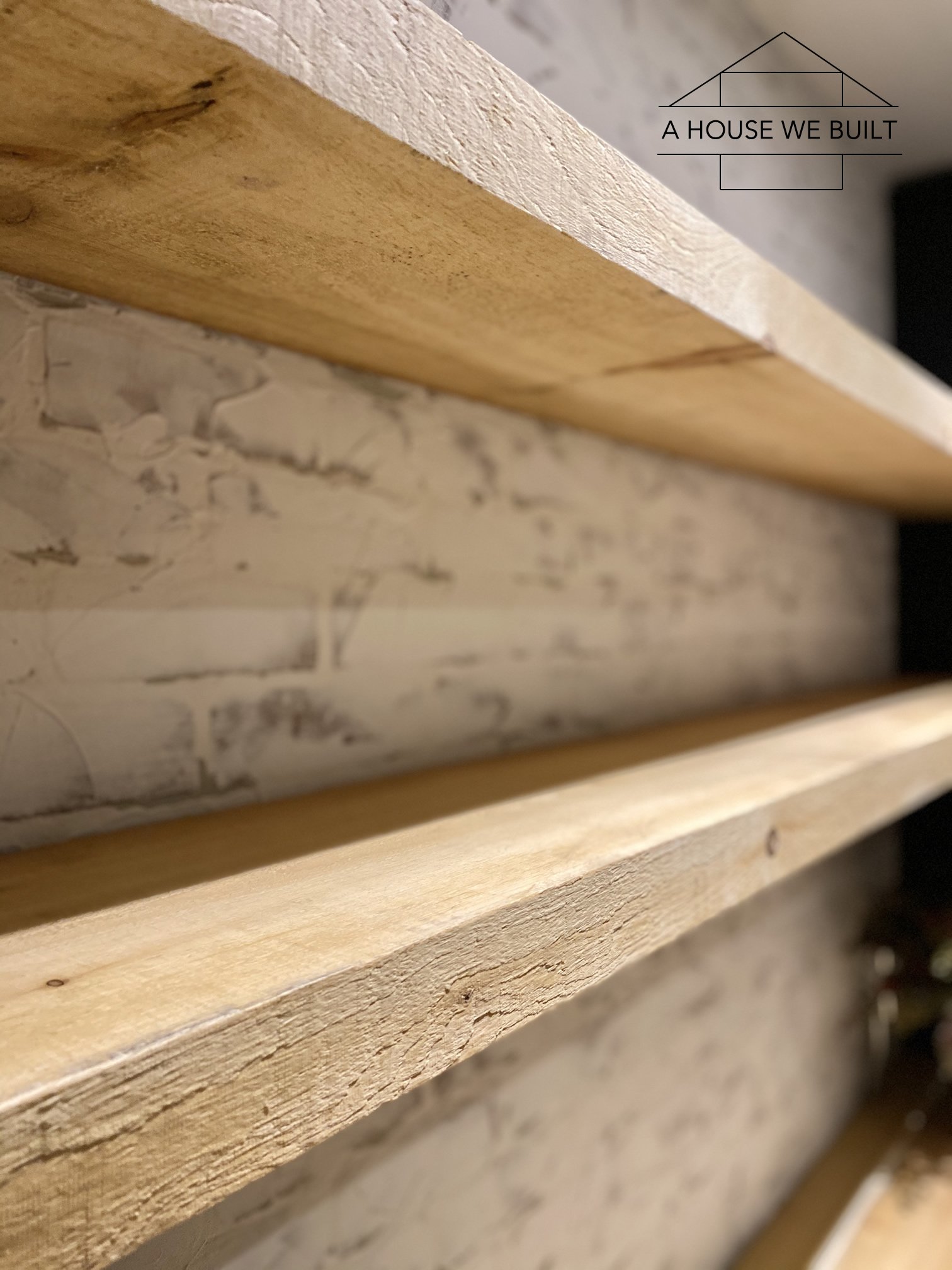Floating shelves are commonly made from high-quality and durable woods such as oak, walnut, and maple. These woods are chosen for their strength, stability, and attractive grain patterns, making them ideal for creating sturdy and visually appealing floating shelves.
They are often preferred due to their ability to withstand the weight of items placed on the shelf, as well as their aesthetic appeal in various home decor styles. When searching for the perfect wood for floating shelves, it’s important to consider not only the visual appeal but also the strength and durability of the wood.
Oak, walnut, and maple are excellent choices for creating long-lasting floating shelves that can support heavy items and enhance the overall look of any space. Each of these woods has its unique characteristics and can be finished in various ways to match different interior design styles. Whether you’re looking to add a touch of warmth with walnut or a classic charm with oak, the type of wood used for floating shelves plays a significant role in the overall functionality and aesthetic of the shelving.
1. Pine
Pine wood is a popular choice for creating floating shelves due to its affordability and versatility.
Advantages Of Pine For Floating Shelves
- Cost-effective: Pine wood is budget-friendly, making it a cost-effective option for DIY projects.
- Easy to work with: Its soft nature allows for easy cutting, shaping, and installation.
- Accepts finishes well: Pine readily absorbs stains and paints, providing a customizable look.
Disadvantages Of Pine For Floating Shelves
- Softness: Pine is prone to dents and scratches due to its softness.
- Prone to warping: Changes in humidity can cause pine to warp over time.
- Less durable: Compared to hardwoods, pine is less durable and may not withstand heavy items.

Credit: www.jthomashome.com
2. Oak
Floating shelves are often crafted from oak wood due to its durable and versatile nature. Oak wood is commonly used for its strength and resistance to wear and tear, making it an ideal choice for creating sturdy and stylish floating shelves.
Oak is a popular choice for floating shelves due to its strength and durability.Advantages Of Oak For Floating Shelves
Disadvantages Of Oak For Floating Shelves
3. Walnut
Walnut is a popular choice for floating shelves due to its durability and attractive grain. This hardwood is known for its strength, making it suitable for supporting heavy items. The rich, dark color of walnut adds a touch of sophistication to any space, making it a stylish and practical choice for floating shelves.
Advantages Of Walnut For Floating Shelves
Walnut is a stunning and popular choice for floating shelves, and it offers several advantages that make it a preferred option for homeowners and interior designers alike.
- Rich and Warm Aesthetic: One of the main advantages of walnut is its natural beauty. The wood has a rich, dark brown color with prominent, swirling grain patterns that add depth and character to any space.
- Durability and Strength: Walnut is a hardwood known for its exceptional durability and strength. This makes it ideal for supporting heavy items on floating shelves, giving you peace of mind that your belongings are secure and safe.
- Resistance to Warping and Cracking: Unlike some other woods, walnut tends to be more resistant to warping and cracking. This means that your floating shelves are less likely to bow or develop unsightly cracks over time, maintaining their structural integrity for years to come.
- Ease of Maintenance: Walnut is relatively low-maintenance, requiring minimal effort to keep it looking beautiful. Regular dusting and occasional polishing with a suitable wood cleaner or oil will help preserve its natural sheen and protect it from everyday wear and tear.
- Compatibility with Various Styles: Walnut has a versatile appeal that complements a wide range of interior styles, from modern and contemporary to rustic and traditional. Whether you have a minimalist aesthetic or prefer a more eclectic look, walnut floating shelves can seamlessly blend into your existing decor.
Disadvantages Of Walnut For Floating Shelves
While walnut is an outstanding option for floating shelves, it is important to consider its potential drawbacks before making a final decision.
- Higher Cost: Compared to some other wood species, walnut can be more expensive. This is due to its popularity and the premium quality it offers. However, the unique beauty and longevity of walnut often justify the higher investment.
- Susceptible to Scratches: Like most wood, walnut is prone to surface scratches. Although these can be easily repaired with a suitable wood filler or polish, it’s essential to take precautions and use appropriate protective measures to minimize potential damage.
- Color Variation: Walnut exhibits natural color variations, ranging from lighter to darker shades. While this adds charm and uniqueness, it is important to carefully select and coordinate your walnut floating shelves to ensure consistent coloring throughout your space.
- Weight: Due to its density, walnut can be heavier compared to other woods. While this characteristic ensures sturdiness, it may require additional support during installation. Ensuring the appropriate anchors and brackets are used will help safeguard against any potential issues caused by the weight of the shelves.

Credit: shelfology.com

Credit: yellowbrickhome.com
Frequently Asked Questions On What Type Of Wood Is Used For Floating Shelves
What Type Of Wood Is Commonly Used For Floating Shelves?
Floating shelves are often made from durable and sturdy woods such as oak, walnut, and maple. These hardwoods provide the strength needed to support the weight of items on the shelves while also offering an attractive appearance. They are known for their versatility and ability to complement various interior styles.
Are Floating Shelves Suitable For All Types Of Wood?
Yes, floating shelves can be made from various types of wood, including reclaimed wood and engineered wood. Each type of wood has its own unique characteristics and aesthetic appeal. It’s important to consider the durability, weight capacity, and visual impact when choosing the best wood for your floating shelves.
What Are The Advantages Of Using Solid Wood For Floating Shelves?
Using solid wood for floating shelves ensures exceptional strength and longevity. Solid wood shelves can withstand heavy items and maintain their structural integrity over time. Additionally, solid wood provides a timeless and natural look, adding warmth and character to any space.
It’s an excellent choice for those seeking durability and aesthetic appeal.
Can Floating Shelves Be Made From Eco-friendly Wood Materials?
Absolutely, floating shelves can be crafted from eco-friendly wood materials such as bamboo and reclaimed wood. These sustainable options not only contribute to environmental conservation but also offer unique textures and grain patterns. Choosing eco-friendly wood for floating shelves aligns with sustainable living practices and adds a touch of natural beauty to your interior design.
Conclusion
To sum up, choosing the right type of wood for your floating shelves is crucial to create a stylish and durable storage solution for your home. Oak, pine, and reclaimed wood are popular choices due to their strength and aesthetics.
Each wood type has its own unique characteristics, so it’s important to consider factors such as budget, style, and maintenance requirements. By carefully selecting the wood for your floating shelves, you can enhance the overall look and functionality of your space.
{ “@context”: “https://schema.org”, “@type”: “FAQPage”, “mainEntity”: [ { “@type”: “Question”, “name”: “What type of wood is commonly used for floating shelves?”, “acceptedAnswer”: { “@type”: “Answer”, “text”: “Floating shelves are often made from durable and sturdy woods such as oak, walnut, and maple. These hardwoods provide the strength needed to support the weight of items on the shelves while also offering an attractive appearance. They are known for their versatility and ability to complement various interior styles.” } } , { “@type”: “Question”, “name”: “Are floating shelves suitable for all types of wood?”, “acceptedAnswer”: { “@type”: “Answer”, “text”: “Yes, floating shelves can be made from various types of wood, including reclaimed wood and engineered wood. Each type of wood has its own unique characteristics and aesthetic appeal. It’s important to consider the durability, weight capacity, and visual impact when choosing the best wood for your floating shelves.” } } , { “@type”: “Question”, “name”: “What are the advantages of using solid wood for floating shelves?”, “acceptedAnswer”: { “@type”: “Answer”, “text”: “Using solid wood for floating shelves ensures exceptional strength and longevity. Solid wood shelves can withstand heavy items and maintain their structural integrity over time. Additionally, solid wood provides a timeless and natural look, adding warmth and character to any space. It’s an excellent choice for those seeking durability and aesthetic appeal.” } } , { “@type”: “Question”, “name”: “Can floating shelves be made from eco-friendly wood materials?”, “acceptedAnswer”: { “@type”: “Answer”, “text”: “Absolutely, floating shelves can be crafted from eco-friendly wood materials such as bamboo and reclaimed wood. These sustainable options not only contribute to environmental conservation but also offer unique textures and grain patterns. Choosing eco-friendly wood for floating shelves aligns with sustainable living practices and adds a touch of natural beauty to your interior design.” } } ] }

